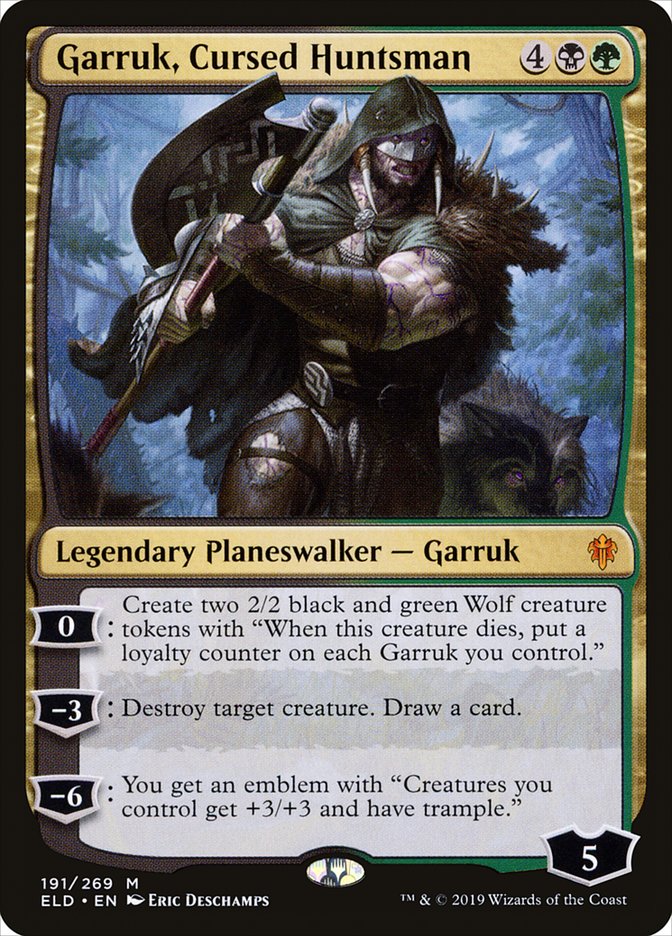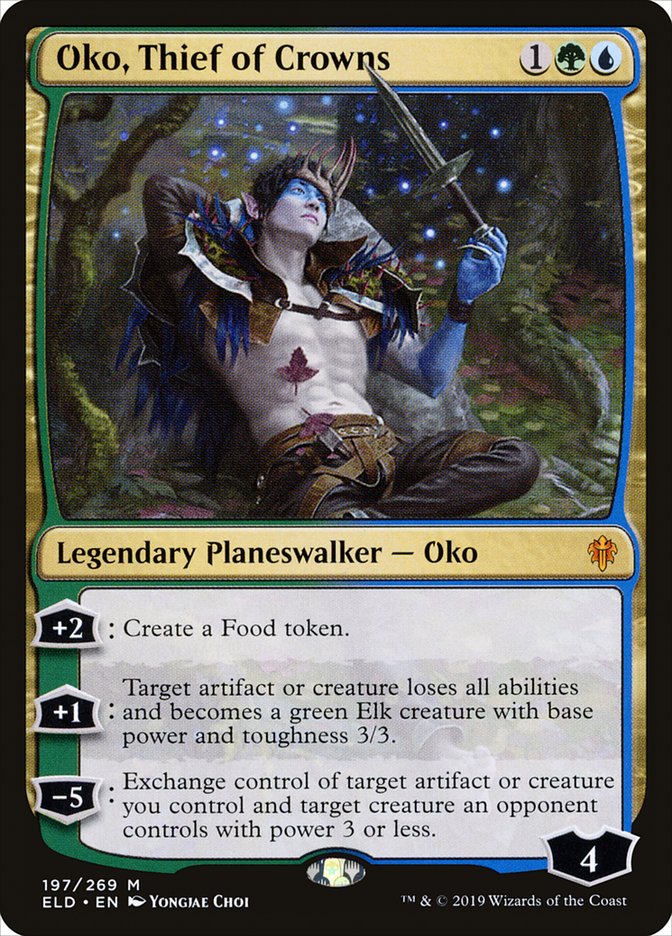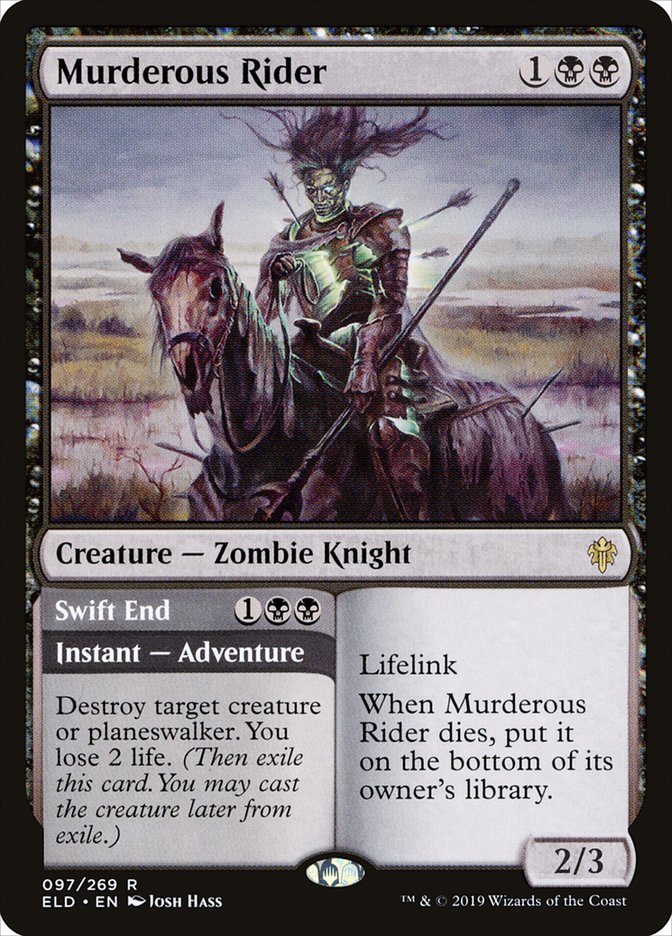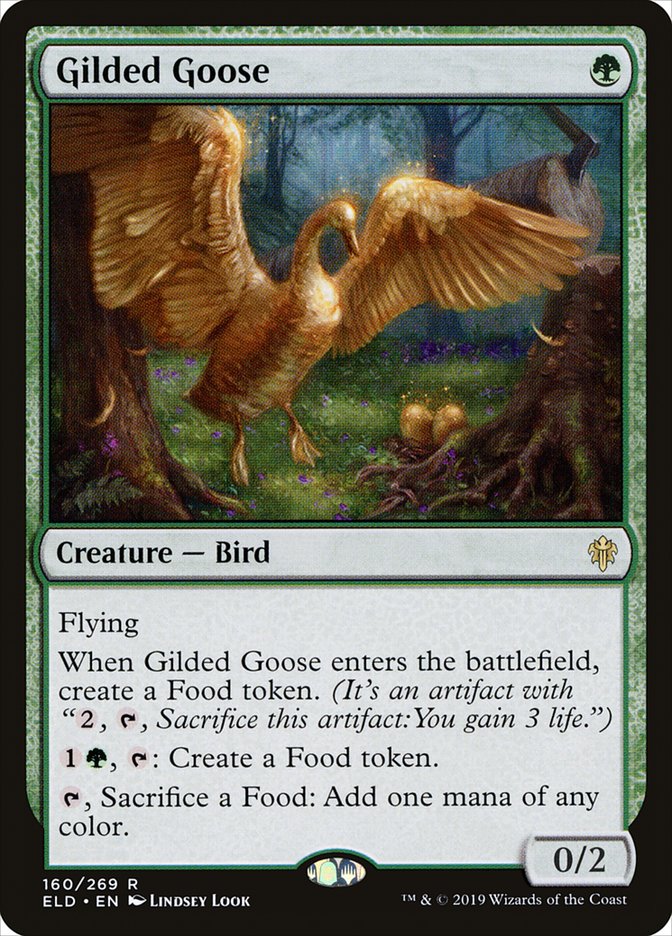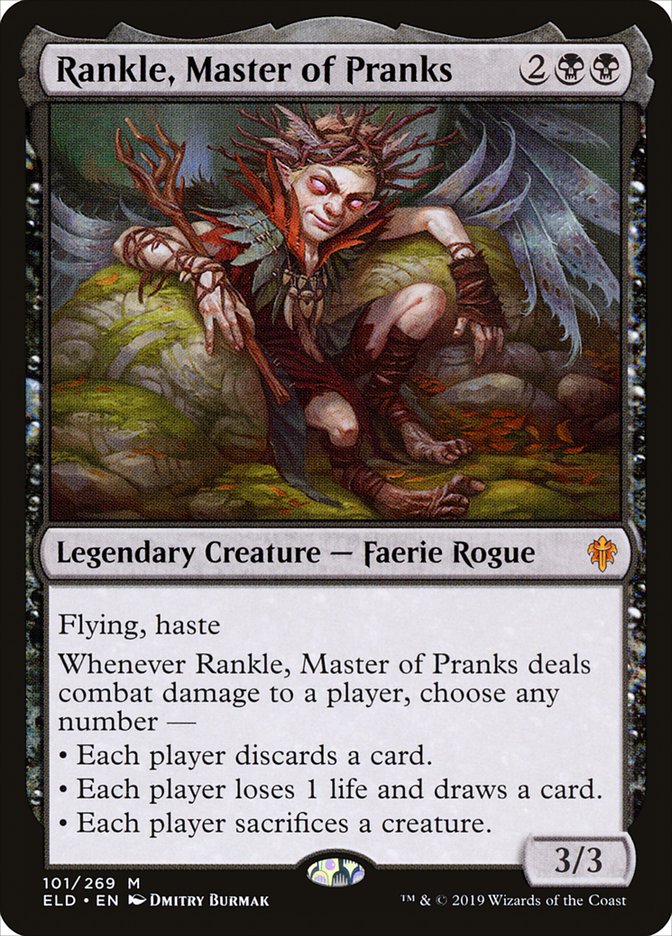Since the release of War of the Spark, Standard has been defined
by two opposing forces:
Mono-Red Aggro and Planeswalker Control decks. It’s unclear whether the
former gains or loses in the rotation, but the latter is a clear winner
with the addition of even more busted ‘walkers. Garruk, Cursed Huntsman and
Oko, Thief of Crowns will join Teferi, Time Raveler and Nissa, Who Shakes
the World as among the most powerful cards in Standard.
The cards I have listed above have more in common than their card type. All
of them virtually guarantee a favorable exchange, presupposing they
resolve. What I mean by this can be illustrated as follows: let’s say you
play a Craw Wurm and your opponent Doom Blades it. The entire effect of
your card has been nullified by the entire effect of their card, but it’s
almost impossible to achieve the same sort of result against any of these
planeswalkers. Even if you immediately land a removal spell on Nissa, your
opponent keeps a 3/3 Vigilance land. The same is true of Garruk’s Wolf
tokens, Teferi’s repulse effect, and Oko’s 3/3 Elk.
Meanwhile, it’s difficult to play counterspells to get around this
lingering value problem because Teferi is so ubiquitous. The matchups
between grindy planeswalker decks tend to go long, and odds are good that
at some point during the game, a low-loyalty Teferi will stick and
counterspells drawn from that point will be dead. The resulting world is
one where every answer is a liability, and all participants play as few of
them as they can manage.
It is this dynamic that has driven so much of the Standard format for the
last six months. Expensive powerful sorceries like Scapeshift, Command the
Dreadhorde, and Mass Manipulation have been given their time in the
spotlight. If there’s no way to trade favorably with the threats, the only
option is to go over the top.
Enter Murderous Rider.
Murderous Rider is almost a strictly better version of the format-warping
Hero’s Downfall. It’s cheap enough to be effective against faster
strategies, while providing an answer that trades at parity, if not
advantage, with almost every planeswalker in Thrones of Eldraine
Standard. They get a single activation; you get a 2/3 Lifelink for 1BB that
you can cast whenever it’s convenient. Swift End is also an instant,
allowing it to answer Haste threats like Skarrgan Hellkite and the
recently-previewed Questing Beast, thereby protecting your own
planeswalkers from harm.
Murderous Rider and Mono-Red Aggro
The drawback of Swift End is simple: you lose two life. This is a drawback
primarily against the other deck that has been almost ubiquitous over the
last six months: Mono-Red Aggro. While some of the deck’s tools are
rotating, I don’t expect it to go anywhere as long as Experimental Frenzy
is legal, since the other pieces are more replaceable. For example, while
cards like Goblin Chainwhirler and Viashino Pyromancer are rotating,
reasonable options like Ember Hauler and Chandra, Acolyte of Flame are
ready to fill those gaps in the curve.
Mono-Red Aggro continues to perform well tournament after tournament and
format after format for one reason: flexibility. Having a low curve of
aggressive creatures backed by a late-game of planeswalkers and
Experimental Frenzy makes it effective at every stage of the game and
difficult to effectively hate out. But this flexibility is exactly why
Murderous Rider is a good option to fight Mono-Red.
When it was last in Standard, amassing cheap creatures too weak to be worth
killing was one of the main ways to exploit Hero’s Downfall. But if you
draw Murderous Rider on Turn 3 against an aggressive or token strategy, it
provides a totally serviceable 2/3 Lifelink blocker. At the same time, if
you draw it later in the game, it will usually still outperform its Theros cousin by generating a 2-for-1 backed by some recurring
lifegain. It’s also relevant to this analysis that while Shock remains
legal in Standard, Lightning Strike has rotated and has no reasonable
replacement. I doubt Mono-Red Aggro will resort to playing Lava Coil or
Chandra’s Triumph in the maindeck and thus they’ll most likely have no way
to trade up on mana against the body of Murderous Rider. With Slaying Fire
running around, it won’t be unkillable, but small efficiency gains can
decide games against aggressive decks and late-game cards that can be cast
early are the perfect tool for attacking Mono-Red Aggro.
Murderous Rider and Double Spelling
When two midrange decks meet, both players typically have access to
reasonable amounts of card advantage, threats, and answers for opposing
threats. The winner of such a slugfest is most often the person who can
cast more spells, with that rate of deployment determined by efficiency as
well as card flow. Barring some unstoppable game-ending combo, this means
games often come down to which player managed to cast two spells in a
single turn more frequently. Murderous Rider excels in this sort of game,
allowing the player who draws it unparalleled flexibility in sequencing. It
can be a play on Turn 3 or Turn 6, but either half can also allow easy
double-spell turns anywhere on the curve. A game in which you play Swift
End plus a two-drop on Turn 5, a six-mana planeswalker on Turn 6, and a
four-drop threat plus Murderous Rider on Turn 7 is going to end in short
order.
Murderous Rider and Teferi, Time Raveler
Teferi, Time Raveler is the best card in Standard right now. Context
matters, though, and there are a ton of powerful cards in Throne of Eldraine, but I doubt this fact will change anytime
soon. It’s important then to recognize just how well Murderous Rider works
both with and against Teferi. If you control Teferi, Murderous Rider allows
you to remove an opposing threat, deploy a solid blocker, then bounce it to
remove another threat later in the game. Teferi has pushed out a lot of the
creatures he lines up well against, so having your own cards to bounce is
fairly desirable at present. In most situations, opposing Teferis will not
want to bounce Murderous Rider for fear of giving you access to another
casting of Swift End. Since virtually every planeswalker shell starts with
four Teferi, the threat of the additional removal spell makes the 2/3 body
far more effective at pressuring planeswalkers than it otherwise would be.
Creatures (24)
- 2 Incubation Druid
- 4 Biogenic Ooze
- 4 Paradise Druid
- 4 Gilded Goose
- 3 Rankle, Master of Pranks
- 4 Murderous Rider
- 3 Questing Beast
Planeswalkers (7)
Lands (22)
Spells (7)

The deck I’ve included here is designed to do one thing: win midrange
planeswalker slugfests. Between Murderous Rider, card draw from Rankle,
Master of Pranks, and the activated abilities of Gilded Goose and Biogenic
Ooze, the deck has enough mana sinks to realistically utilize the huge
amounts of mana it will regularly generate. At the same time, Rankle,
Questing Beast, and Nissa provide haste threats that, when combined with
planeswalker removal, ensure that it keeps opposing ‘walkers off the table
while producing an unassailable battlefield.
There are also a number of small synergies revolving around sacrifice
fodder in the deck. Vraska, Golgari Queen is capable of sacrificing Food
tokens produced by Gilded Goose, irrelevant mana creatures, and
post-adventure Murderous Riders to generate additional cards. Rankle,
Master of Pranks can sacrifice the same bodies to remove opposing
creatures, while performing its card flow related duties. But the cherry on
top is Garruk, Cursed Huntsman. With either sac outlet on the battlefield,
Garruk can ultimate the turn after he comes down and turn every Gilded
Goose and Paradise Druid into a terrifying threat. His ultimate also works
particularly well with haste creatures, not that it really matters at that
point.
Murderous Rider allows this deck to take maximum advantage of the card
selection offered by Once Upon a Time. The Throne of Eldraine draw
smoother can be a land, a mana creature, a payoff, or a removal spell, all
for the bargain-basement price of zero mana. Without Rider, the creature
count would be low enough to make the sifting effect dicey when a land is
not desirable, not to mention substantially less versatile. The high
creature count also serves to insulate the deck from The Elderspell, which
was heavily played the last time Standard revolved around planeswalkers.
A strategy like this needs a specific metagame to shine, specifically one
without decks capable of going over the top. Luckily, Nexus of Fate,
Scapeshift and the engine of Kethis Combo are all rotating. With the Dominaria checklands gone, it will be quite difficult to play a
deck that contains both Tamiyo, Collector of Tales and Command the
Dreadhorde due to the inherent mana issues. All-in-all, now might be the
perfect time for Murderous Rider.
There’s a chance a retooled Wilderness Reclamation strategy or brutally
fast aggro deck emerges to put a stop to the midrange fun, but until that
time I look forward to bringing all of my opponent’s fairy tales to a
Swift, and murderous, End.


